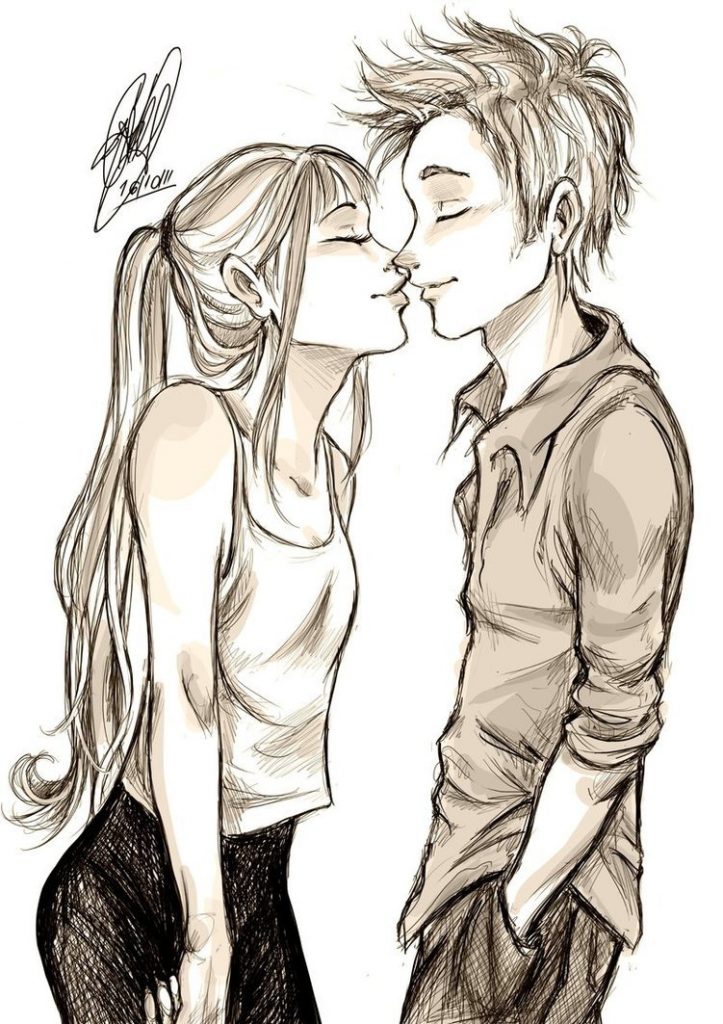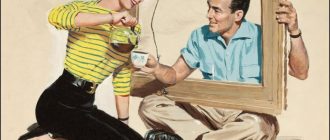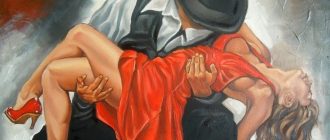Romance is defined by one prominent publication as “a feeling orexcitement or mystery associated with love”. That’s a good jumping offpoint for a discussion of romance and romantic love. Any two people couldhave an entirely different idea what romance is and be right.

Some might equate romance with the butterflies people have on their firstkiss, or the sense of longing for the object of their affections, whileothers view romance as the outward display of your feelings of love, whetherit’s gift-giving or grand gestures towards your romantic partner.
Somemight view sacrifice for the object of one’s love as the highest form ofromance, while others might view a good Jane Austen novel, a good romanticcomedy, or the Twilightfilms as the highest form of romance ourculture has produced.
Most of these interpretations of “romance” have some validity. Westernculture has an entire tradition of romance to discuss, and each of theexamples I gave hearkens back to an earlier romantic tradition. So I want todiscuss this tradition to inform you about the long romantic tradition.
Courtly Love – Chivalric Romance
Websters Dictionary places heavy emphasis in their definition ofromance on romance literature based on the medieval concept of chivalry, andterms romance “a medieval tale based on legend, chivalric love andadventure, or the supernatural”.
Chivalry derives from the courtly lovetradition of the Middle Ages, and involves nobly and chivalrously expressingones love and admiration for another. In the courtly tradition, the man andwoman are nobles and they are not a married couple. Instead, the nobleadmirer seldom consummates their love for the target of their affection,instead suffering in secret as they perform noble and brave deeds in thisperson’s honor. The subtext is that the noble lady being admired is part ofan arranged marriage, generally a loveless marriage, and the man’sadmiration is an ideal outlet for such a man with a secret love obsession.

Courtly love became a part of the literature of Southern France in the12th century (from the 1170s onward), and were heavily influenced by WesternEurope’s new-found discovery of Arab culture–especially the advanced Arabpoetry of the time. This was absorbed into the culture of France through thetroubadours and trouveres, who wrote poetry dedicated to courtly romance.
This poetry combined what we consider the contradictory elements of illicitlove and spiritual transcendence, described by one commentator as illicit,passionate, humiliating, disciplined, and human.
Romance Literature
From this tradition came the wider idea of romance literature wediscussed above, where the medieval knight strode into the world and didbrave deeds on behalf of the object of his affections. These storieswere told and retold for several centuries, falling out of favor around theyear 1600 in lieu of more realistic themes and more modern storylines.Examples of the medieval romance are the Matter of Rome, an odd conflationof the stories of Alexander the Great and the Trojan War; a Matter ofFrance, about Roland, the chief paladin riding under the banner ofCharlemagne; and a Matter of Britain, about the Arthurian legends andCamelot.
The popular stories of King Arthur heavily borrow from the courtly lovetradition, where Lancelot is in love with the wife of his king, QueenGuinevere. In later retellings of these stories, Lancelot and Guinevereconsummate their mutual love, helping to bring about the downfall ofCamelot.
In the generation of William Shakespeare and Miguel de Cervantes (circa 1600), the medieval romance finally was surpassed. Cervantesexplicitly breaks from the past, as his Don Quixote reads too much about afamous medieval legend (Amadis of Gaul) and travels the modern countrysideas a medieval knight. Because he is a man out of time, all the modern peoplehe meets think poor Don Quixote is mad.
Shakespeare’s play Hamlet is also about a man clashing with theprevailing culture, but Hamlet inverts the formula. Instead ofbeing a medieval man in a modern setting, Hamlet is a modern man in amedieval revenge story. Where a medieval knight would have learned who hadwronged him, taken out his sword, and cut a swath through his tormentors(something like a modern action movie), Hamlet hesitates, wonders whetherthe ghosts tell the truth, tries to solve the mystery through deduction, andprocrastinates the decision to take the life of his dastardly uncle.
With these stories, and many stories influenced by them, the medievalromance was dead.
Later Romance Traditions
In the Gothic Romance tradition of the 18th and 19th centuries (mainlyin England), the romance in literature once again found a place. In theGothic Romance, supernatural themes sometimes tinged with horror were set inhaunted castles and amidst medieval ruins. The first of these was the 1764novel by Horace Walpole, The Castle of Otranto, which set many of theconventions of the genre. Later authors like Charles Robert Maturin, AnnRadcliffe, Bram Stoker, Mary Shelley, Edgar Allan Poe and Daphne du Maurierdrew from this tradition.
The Romantic Era
This genre was subsumed in a greater Romantic Era that pervaded thearts from around 1800 and lasted throughout much of the 19th century, insome fields of art deep into the Victorian Age. The Romantic Periodroughly coincides with the innovations Beethoven brought to classical music,as he injected passion and melodrama into his compositions. The periodbefore was about refinement and sophistication, so Beethoven’s revolution inmusic both electrified and scandalized the European public. It was nocoincidence that his innovations occurred during the days of the FrenchRevolution and the resulting Napoleonic Era which followed. In fact,Beethoven’s 3rd Symphony, originally called The Bonaparte Symphony, isconsidered the beginning of the Romantic period in music. When Beethovenlearned that Napoleon had taken the imperial crown of France, thus betrayingrevolutionary ideas, Beethoven is said to have struck out the title andrenamed it the Eroica or Heroic Symphony.
Romantic composers such as Franz Schubert, Franz Liszt, FredericChopin, Richard Wagner, Johannes Brahms, and Pyotr Tchaikovsky were justsome of the men who contributed to the outstanding achievements of theromantic era of classical music.
The romantic era was embraced by most other forms of European art atthe time. Romanticism in painting (and in all fields) was a reaction tothe Industrial Revolution, and the painters of the late-18th and early-19thcentury drew on medieval and classical themes and portrayed life indramatic, larger-than-life ways. Not all hearkened back to the old days,because nationalism was often a theme of romantic artists of thetime–though even these often drew upon the folk legends and traditions ofthe regions they were from.
In writing, the Romantic poets became world famous. The greatEnglish romanticists included Lord Byron, William Blake, William Wordsworth,John Keats, Samuel Taylor Coleridge, and Percy Bysshe Shelley, but fineromantic poets were found in most of the European countries of that time(such as the towering figure of German poetry, Johann Wolfgang von Goethe).This body of romantic poetry is considered among the finest poetic verseever written. Meanwhile, romantic prose found form in the works of CharlotteBronte (Jane Eyre) and Emily Bronte (Wuthering Heights), James FennimoreCooper (Last of the Mohicans), and Herman Melville (Moby Dick). As with theromantic poetry, nature is a major part of the romantic setting, whileemotion and imagination are more important than intellect and reason. Again,these are reactions to the 18th century’s Age of Enlightenment, when scienceand mathematics truly came into their own.
While the 18th century can be said to have elevated reason andlearning to new heights, the 19th century often involved the lone romanticfigure struggling against seemingly impossible odds. While this is farafield from the idea of romantic love, this concept still pervades theromance stories of our time. In romantic literature today, the couple tendsto be struggling against seemingly impossible circumstances.
Modern Romance
The 20th and early 21st century has its own share of romance novels.With the inception of Hollywood and the film industry, a whole new mediumwas found to tell romantic stories. So much of the movies and tv shows wewatch these days have to do with love and romance that it would be hard toimagine the film industry without romantic films.
Hardly a week passes with a romantic comedy, chick flick, or bromancecoming out in wide release. Jane Austen movies and Jane Austen novels,and all kinds of odd derivations of her works, are a phenomenon among acertain niche. Meanwhile, the New York Times Bestseller list is full ofromantic novels. These might be the romantic stories of Danielle Steele orthe horror romance of Charlaine Harris and Stephanie Meyers.
Romance Explained
So when you talk about romance and the romantic tradition, you draw onnearly a thousand years of western literary and artistic tradition.People have so many different ideas what romance is, because there have beenso many definitions over the years. In the end, romance tends to be about”love no matter what”, feelings over reason, and that magical moment whenlove is first realized. Romance is when two very different people put theirdifferences aside and come together in love.
Often over the generations, romance and youth intertwine, because ourteen years is when most of us first experience romance. From Romeo &Juliet to the 100-year old vampire dating a high school girl, youth isserved when it comes to the romantic tradition. Luckily, romance is morethan that, because romance occurs anytime two people share the bonds oflove, anytime one lover makes sacrifices for another, and anytime you reachout to show your loved one how much they mean to you. Romance isn’t just forthose new to the passions of love, but for anyone who is willing to shedtheir skepticism and cynicism and believe that love can be theirs.






